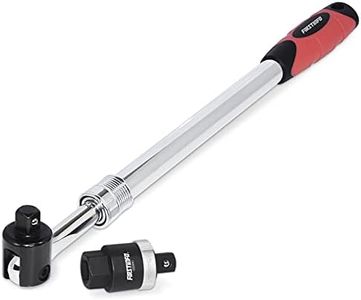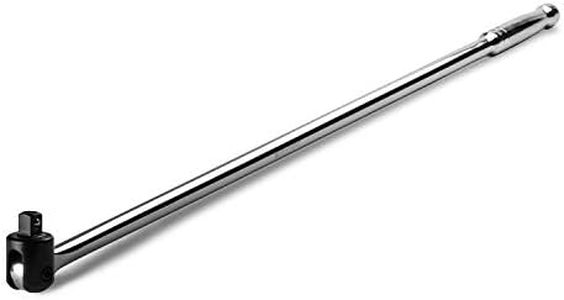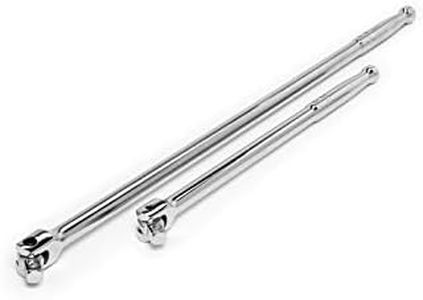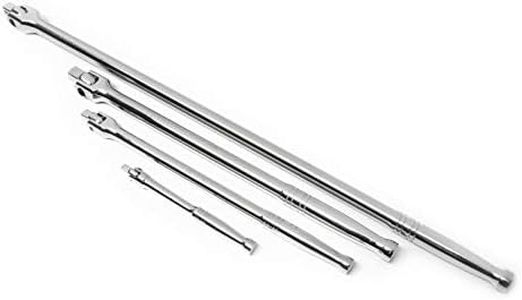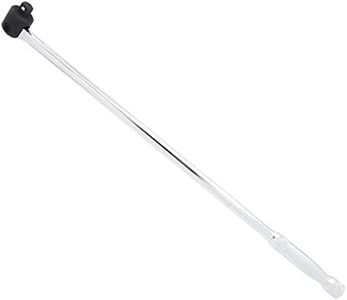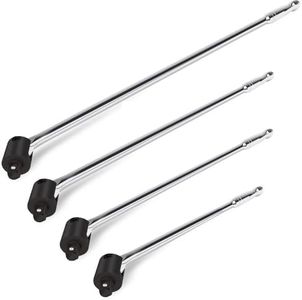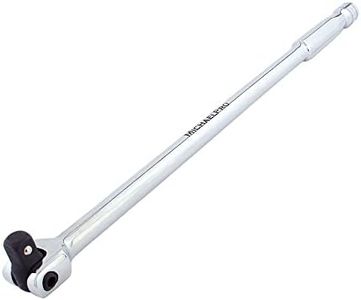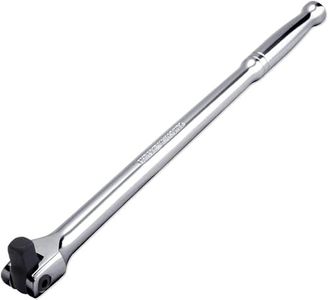We Use CookiesWe use cookies to enhance the security, performance,
functionality and for analytical and promotional activities. By continuing to browse this site you
are agreeing to our privacy policy
10 Best Breaker Bars
From leading brands and best sellers available on the web.Buying Guide for the Best Breaker Bars
When choosing a breaker bar, it's important to understand that this tool is designed to provide extra leverage when loosening very tight bolts and nuts, especially when a standard wrench just won’t do. Picking the right breaker bar depends not just on the power and size you need, but also on how much space you have to work and the types of fasteners you usually deal with. Matching the breaker bar’s specifications to your tasks helps ensure you get a tool that’s comfortable, safe, and effective for the jobs you encounter.LengthLength refers to how long the breaker bar is from end to end. This is a key factor because a longer bar gives you more leverage, making it easier to loosen stubborn fasteners, but it also means the tool takes up more space and can be harder to maneuver in tight areas. Breaker bars commonly come in lengths ranging from about 12 inches up to 40 inches or more. Shorter bars (12-18 inches) can work better in compact spaces where maneuverability is more important, while longer bars (24 inches and above) offer maximum leverage for really tough bolts. When choosing the length, think about the type of jobs you do most often: if you regularly tackle heavy-duty automotive or machinery work, a longer bar is helpful; for household tasks or tight spots, a medium or shorter bar might be more practical.
Drive SizeThe drive size indicates the size of the square fitting that attaches sockets to the breaker bar. Typical sizes are 1/4 inch, 3/8 inch, 1/2 inch, and 3/4 inch, with larger drives made for heavier-duty work. Smaller drive sizes (like 1/4 or 3/8 inch) are best for lighter jobs and smaller fasteners, offering easier handling in smaller spaces. The most common for general automotive and household work is 1/2 inch, since it fits a wide range of sockets and balances strength with versatility. Choose the drive size based on the types of bolts and nuts you most often need to loosen—matching it to the sockets you already have makes it more useful.
Material and Build QualityThis refers to what the breaker bar is made of and how well it’s constructed. Breaker bars are usually made from materials like chrome vanadium steel or chrome molybdenum steel, which are strong and resistant to bending or breaking under heavy pressure. A tool with a strong, solid construction will last longer and be safer to use during tough jobs. Look for bars with a corrosion-resistant finish to ensure durability. If you plan to put your breaker bar through intensive use, opt for one made with high-quality steel to avoid the risk of snapping the tool mid-use.
Handle Design and ComfortHandle design covers both the shape of the grip and whether the bar has any comfort features, such as a padded or textured grip. A breaker bar can require a lot of force, so a comfortable handle can help prevent hand fatigue and make the tool easier to control. Slim, smooth handles might slip more easily, while handles with grooves or rubberized coatings offer a more secure, comfortable grip—especially in oily or wet conditions. If you know you’ll be applying a lot of force, or working for extended periods, a comfortable, non-slip handle is worth considering.
Flex or Swivel HeadSome breaker bars feature a fixed head, while others have a flex or swivel head that allows the angle of the socket to change relative to the handle. A flex head can be really useful for getting the right position in tight or awkward spaces, making it easier to reach fasteners that aren’t in a straight line. If you regularly work in areas where access can be tricky, choosing a breaker bar with a flexible head will give you more versatility and help you tackle a wider range of jobs.
